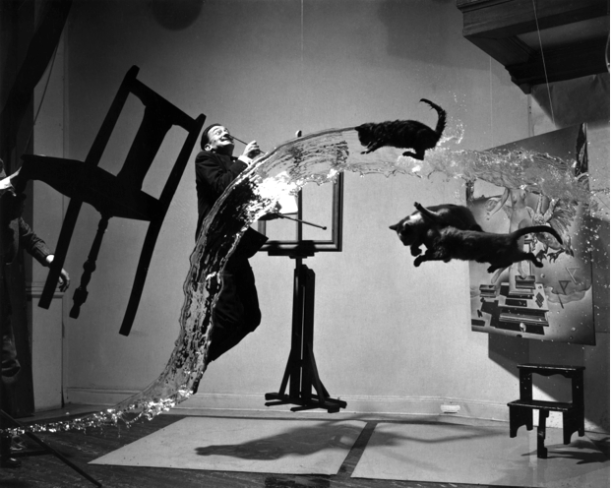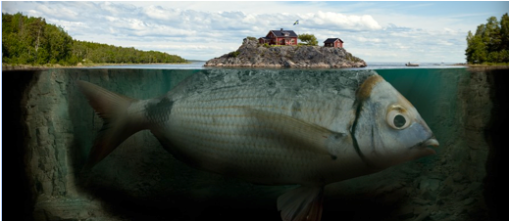Surrealism
Surrealism is often being described as a modern contemporary art movement which firstly emerged in the beginning of 20th century ( 1920 – onwards ). It mainly focuses on visual art and literature.
The main purpose of this movement is to give viewers idea of relationship between dream and reality , often these two elements are being put together to create an illogical scene. Many surrealist artists and writers tried to uncover dreams, desire, madness the uninhibited imagination, the unconscious the hallucinatory and express other strong emotions that overwhelm the mind. ( Dept. of photographs , 2000). It always created a dialoque between the conscious and unconscious mind. As Sigmund Freud believes that the unconscious state of mind that trigger surrealistic art.
is after all is one of the revolutionary movement in art in modern era and Paris was the epicenter of the movement.
The concept or the embryo of the movement emerged during the frantic moment of world war I. Many artists, painter, writer and intellectual became involved and believed in Dada movement .Which views that excessive rational thought had created tremendous conflict to the world. These people often being described as Dadaist.
The Dadaist main purpose and aim is to put a revolutionary brand new thoughts in every aspect of society ( cultural, political ) and personal value as said by the Leader of the movement Andre Breton. They wants to free people from manipulated rationality , and custom structures.
This movement was still considered unofficial and underground until 1924 when Andre Breton published the first manifesto of surrealism and published a journal called La revolution surrealiste ( surrealist revolution )
Surrealism, by which one proposes to express, either verbally, in writing, or by any other manner, the real functioning of thought.
Surrealism is based on the belief in the superior reality of certain forms of previously neglected associations, the omnipotence of dream, in the disintegrated play of thought. It tends to ruin once and for all other psychic mechanisms and to substitute itself for them in solving all the principal problems of life. (“Manifesto of Surrealism”. Tcf.ua.edu. 1924-06-08. Retrieved 2012-12-06)
The movement continued to gain prominence until 1930, when the idea developed further with second manifesto of surrealism.
And yet after gaining influence as emerging cultural movement, surrealism becoming one of the most revolutionary political movement across France and then across Europe. The followers or the members of the movement often described as the supporter of communism. Andre Breton and his follower joining the communist party fighting for what is so called as liberation of man.
1930’s is the year when surrealism movement is about to reach its golden age. By 1936 another surrealist group developed in England
World War II was impacting the development of surrealism art tremendously. The rise of Nazi and Fascism have forced many artist, writer and intellectual to fled Europe and established their idea in the free world of United States. The surrealist group and the followers of the movement flourished in city like New York. The idea of unconscious and dreamy imagery quickly accepted and embraced. And the even the leader itself Andre Breton acknowledging the potential of the United States open culture, he himself paid a visit to the United States in 1941 when Charles Henri Ford, an American Poet gave Breton a channel to promote surrealism throughout the country.
Surrealism in photography opens a brand new idea on how people look and perceive things. It is very imaginary opening up a lot of new possibilities but also contradictory since the photographer are meant to capture what people define as reality.
Surreal photography can often be blurred with conceptual photography, surreal photography would be more about creating a world or image which goes beyond the physical world as we know it. It usually shows something which would be impossible in real life or contradict with the line of defining what is real and what is imaginary. You can define surreal as beyond reality.
And there are a couple of procedures that usually being applied in surreal photography such as the use of double exposures, combination printing, montage, evoked the union of dream and reality.
It brought up a new pioneer and pioneer on the movement, such as: Henri Cartier Bresson, Lee Miller, Man Ray, Lee Miller, Salvador Dali, Andre Kertesz.
All of their works are considered being considered as high-art, and due to the nature of surrealism itself the photographs are not just meant as beautiful images but as a highly intellectual art
One of the early famous work of surrealism is The Dali Atomicus by Philippe Halsman ( 1948)

It took more than 20 more attempts and train and error shot before he was happy with the result.
Unfortunately the influence of intellectual Surrealism art movement began to decline in the 1960 following the beginning of tension between the two superpowers resulting in long-lasting cold war which ended in 1991. One of the main reason is surrealism movement has been long considered as the supporter of communism and left wing political movement.
But the idea or the concept of the movement still exist in the present day. One of the photographer that explicitly embraces the idea is Erik Johansson, Christophe Gilbert. And the purpose of the picture has been more broadly defined. Not only as communicating visual , unconscious message, its been used as a tool to advertise or to market an idea or product.
So at the end there isn’t an absolute reality. What we considered reality is based on our own perception, and surrealism art is there to alter your perception to move you beyond the common reality we always see every single time. It is there to put you into a brand new imaginary world and to make you believe that no dreams can never be come true
As what Erik Johansson said a photograph that leaves a brief moment to think. Capturing the idea instead the moment. The perspective is the illusion. It is not about what is real what is not, its about what we perceive as reality.



































